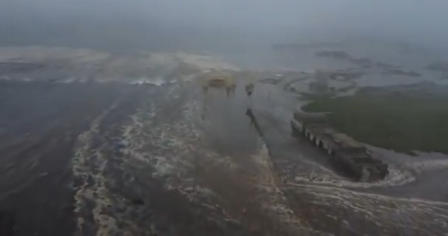Moscow, July 30 — A powerful 8.7-magnitude earthquake struck off Russia’s Far Eastern Kamchatka Peninsula early Wednesday, triggering tsunami waves and prompting evacuation alerts across several Pacific nations, including Japan and the United States.
The quake, one of the strongest in recent years, was centered about 119 km from Petropavlovsk-Kamchatsky, a city of around 180,000 people. Tsunami waves measuring between 3 and 4 meters (10 to 13 feet) were reported along the Kamchatka coast, damaging structures and forcing evacuations in several areas. However, no serious injuries have been reported so far.
Japan’s Meteorological Agency reported tsunami waves of 40 cm in Tokachi and 30 cm in Nemuro, both on Hokkaido island’s coast. Though relatively small, these waves confirmed the quake’s widespread impact across the Pacific basin.
The Pacific Tsunami Warning Centre issued alerts for a broad region, warning that waves exceeding 3 meters could affect parts of Alaska, Hawaii, Chile, the Solomon Islands, and New Zealand. In Honolulu, tsunami sirens prompted residents and tourists to move to higher ground as a precaution.
In Russia’s Kuril Islands, the settlement of Severo-Kurilsk experienced the first wave shortly after the quake. Local Governor Valery Limarenko confirmed that evacuations were conducted swiftly in vulnerable zones.
Authorities continue to monitor the situation, urging coastal populations across the Pacific to remain vigilant. While structural damages have been reported in parts of Kamchatka, emergency services are assessing the full extent of the impact.
The event has sparked renewed discussions on regional preparedness for natural disasters in the seismically active Pacific Ring of Fire. Experts are continuing to analyze aftershock risks and potential wave patterns across the affected regions.










